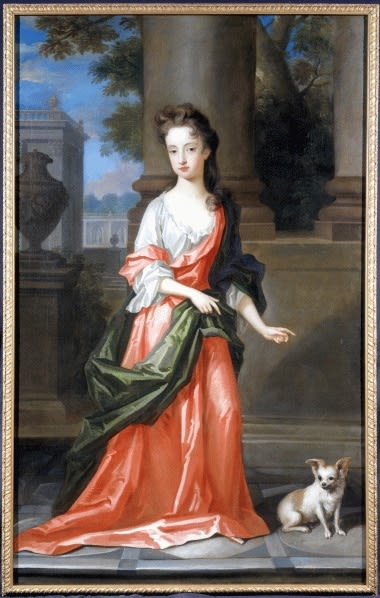
Charles D'Agar
To view all current artworks for sale visit philipmould.com
Charles D'Agar came to England with his Huguenot father Jacques in 1681, settling here permanently after a stay in Copenhagen by 1691. He enjoyed a wide practice, numbering such people as the Duke of Buccleuch and Lord Bolingbroke among his patrons.
His manner is at first very like that of Sir Godfrey Kneller, but the hardness around the narrow eyes and the broad, smooth forehead that he tends to give to his sitters remains a distinguishing feature. In fact he is more directly comparable in style to Michael Dahl, whose treatment of children particularly is similar, not only in overall character, but in distinctive features such as the cresting hair above the forehead which is common to the work of both painters. The present portrait is very like a portrait of Lord George Douglas in the collection of the Dukes of Buccleuch, which was painted in 1709. The two could indeed be thought of a complementary but opposable pair, the one a boy's portrait with a suggestion of the outdoors, the other more feminine, entirely enclosed in a garden with no suggestion of untamed nature. The sizes are approximately the same - c.60 x 40 inches, which would seem to have been a standard dimension for Dagar's child full-lengths - and they employ the same staging device, whereby the sitter is placed on a terrace, although the wild landscape in the Douglas portrait is replaced instead by an Italian garden, with balustrading, niches and statuary. Also, although mirrored, it employs the same trick of trailing drapery just cropped by the edge of the canvas as it rests out of the picture. Lord George Douglas is also shown with a dog but, in a characterisation appropriate to the sexes, he is shown with a greyhound, the sitter in our portrait is attended by a small oriental lapdog, perhaps a peke.